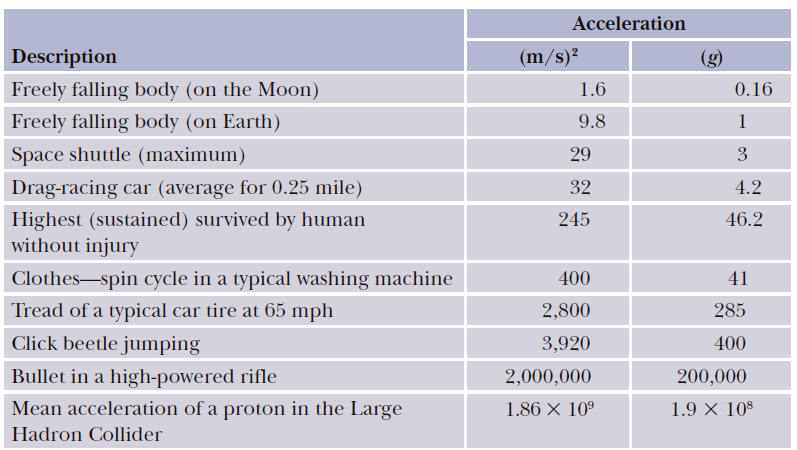Air Force Col. John P. Stapp was a pioneer in the study of the effects of large,
Question:
(a) Calculate the average (negative) acceleration that Col. Stapp experienced as the sled came to a stop. How many g €™s is this?
(b) Find the distance Stapp traveled during the time it took to brake the sled from its maximum speed to rest.
Because the acceleration of the sled as it was brought to a stop was not constant, the average acceleration computed in part (a) is smaller than the maximum (negative) acceleration that Col. Stapp suffered. On-board measurements showed that Stapp survived up to 46.2 g€™s of acceleration during the final moments of his run (see Table 1.3).

Fantastic news! We've Found the answer you've been seeking!
Step by Step Answer:
Related Book For 

Question Posted:





